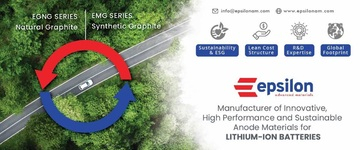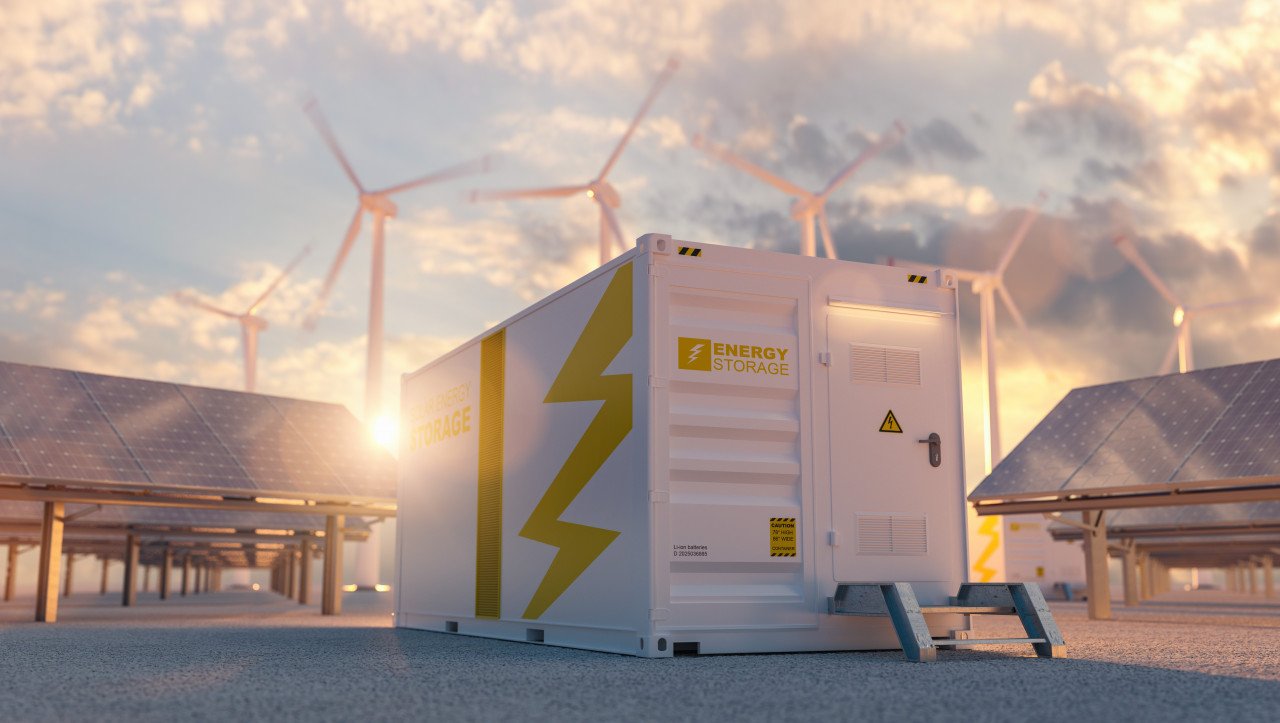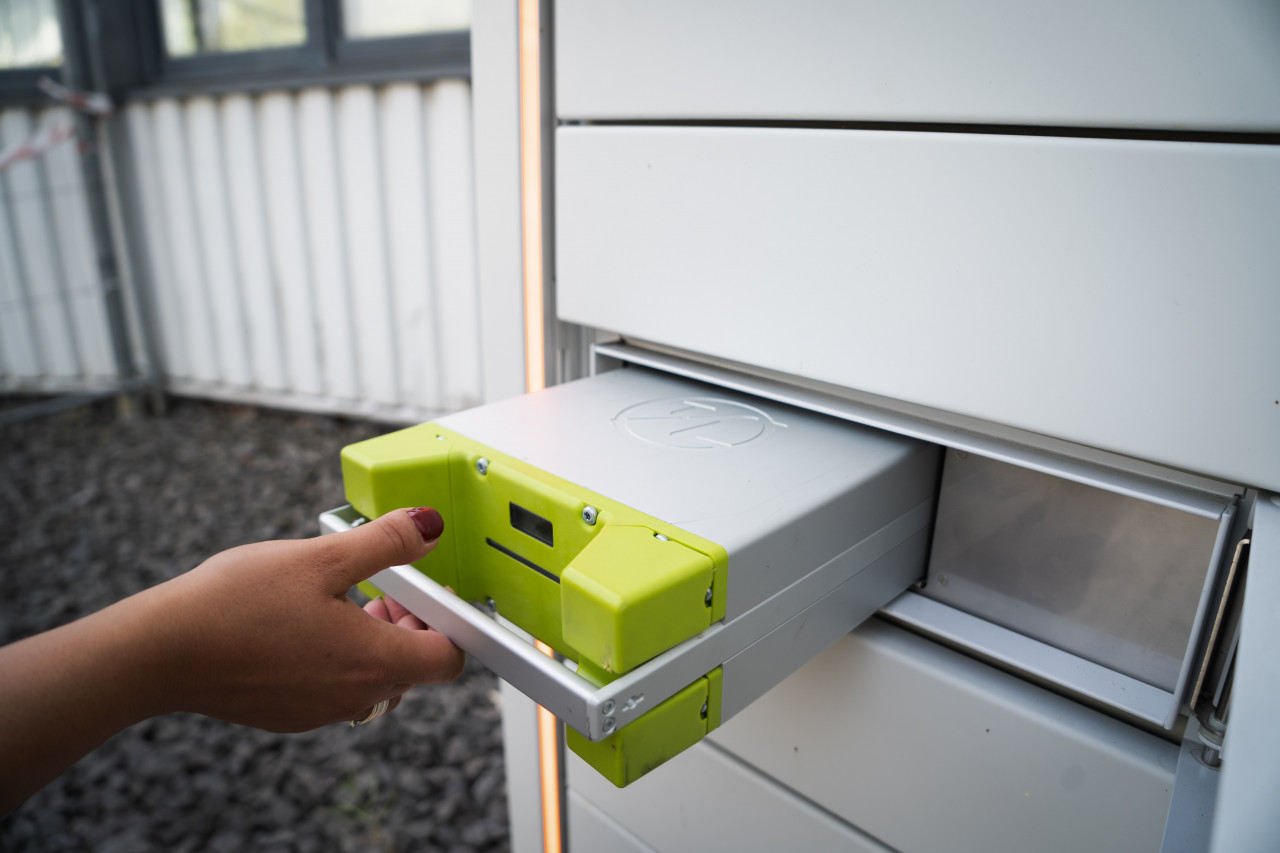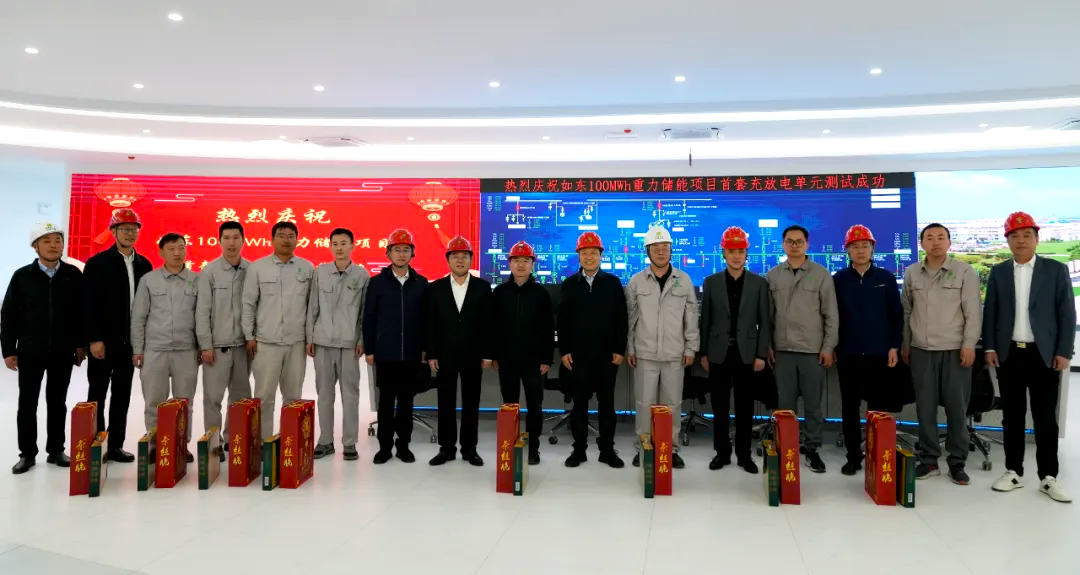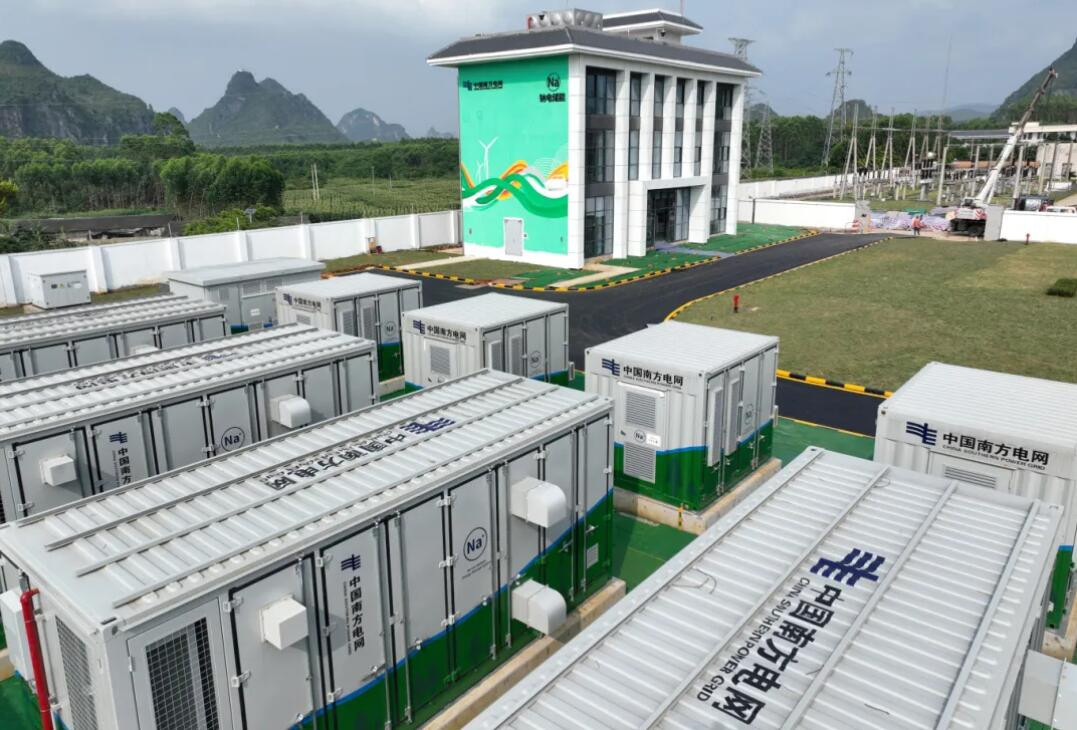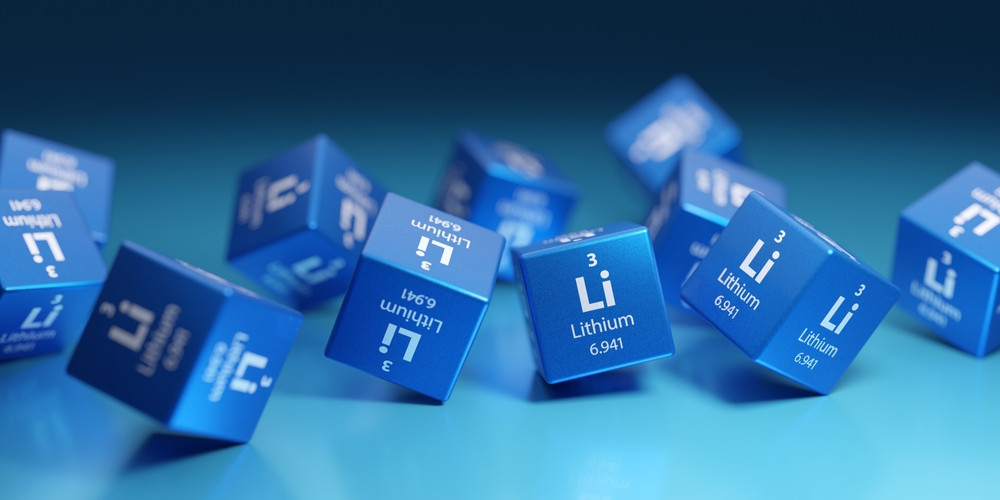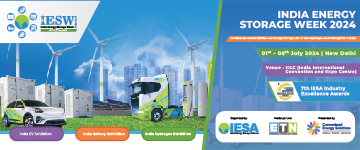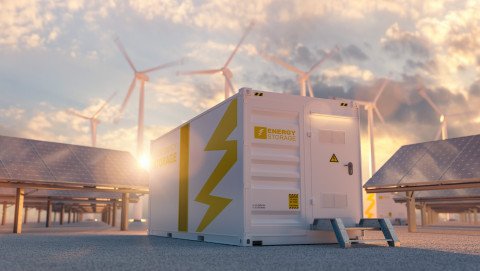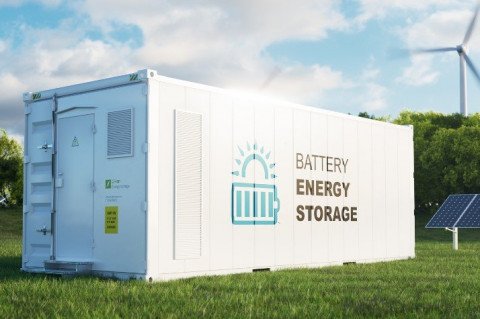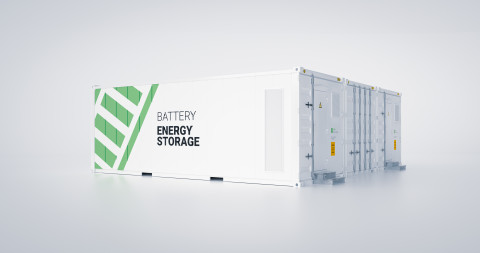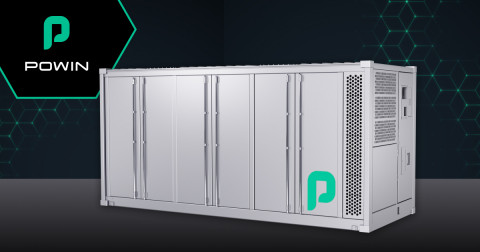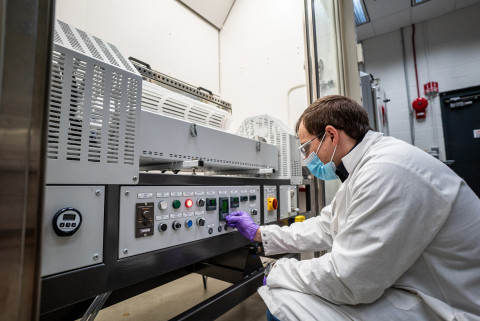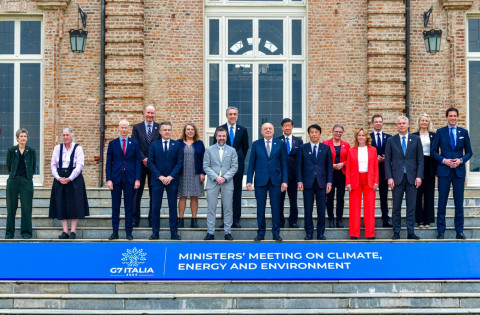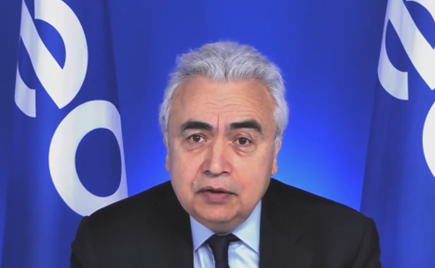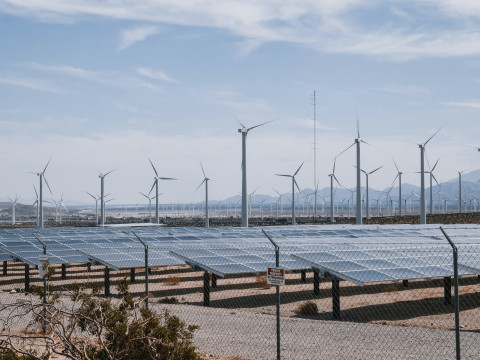IESA-DOE initiates India-US intergovernmental dialogue for energy storage
On June 15, India Energy Storage Alliance (IESA) in collaboration with the U.S. Department of Energy (DOE) kickstarted the dialogue on the US-India Energy Storage Partnership.
In the first, among a series of webinars on energy storage organized under the aegis of the US-India Strategic Clean Energy Partnership (SCEP), the dialogue explored opportunities for energy storage, large-scale integrations of renewables to support grid operations, and electrification of end-uses.
The US-India energy storage partnership webinar organized by IESA drew together senior government officials and industry stakeholders from both India and the United States for an insightful deliberation on technology, policy, business case as well as safety and finance to enable large-scale integration of renewable energy into the grid by accelerating the adoption of energy storage.
"It is all about decarbonization," said Dr. Imre Gyuk, Director of Energy Storage Research, Office of Electricity, US Department of Energy (DOE) setting the tone for the panel discussion.
The only way forward is to rely on renewable energy. However, the variable nature of renewable energy makes energy storage an essential buffer between variable generation and the load.
"As we deploy more and more renewable energy, we will also need more and more storage," Dr. Gyuk underscored.
The next set of speakers gave a high-level presentation on the energy storage landscape, policy, and market developments in the US and India.
Speakers
Eric Hsieh - The Deputy Assistant Secretary at the Department of Energy's Office of Electricity
Energy Storage Goals
Energy storage is one of the signature priorities of the DOE and the second Energy Earthshot launched in July 2021, the long-duration storage shot seeks a 90% reduction in storage cost by the end of the decade for a 10+ hour duration storage system. This target is based on the levelized cost of storage of 5 cents per kilowatt hour (kWh), which would make the combination of renewables and storage competitive on both a cost and dispatchability basis with combined cycle thermal units in many contexts.
Technologies
For technologies that could reach the target, DOE has supported dozens of storage technologies over the past decades. We are starting the process now through the Energy Storage Grand Challenge to focus on the technologies that best satisfy the major use cases like grid decarbonization or powering remote communities. Just over a year after DOE launched the Earthshot, Congress passed the Inflation Reduction Act, which includes storage specific to the investment tax credit. A project could qualify for up to a 50% ITC depending on domestic manufacturing, energy, community or other criteria. In some cases, these credits get us 2/3 of the way to the target, potentially accelerating our goals by building a decade or more.
R&D and Innovation
There are a variety of storage-specific R&D programs that DOE has announced in just the past year. Over 500 million for storage-specific activities and billions more for storage-eligible projects all throughout the technology.
Policy and Market
DOE plays a more informative role in the policy and market. Individual States in the US have wide latitude to shape energy infrastructure. The States also vary in geographical conditions which can influence the need for storage functions as well. Recognizing that storage is a layer of complexity to the existing regulatory and planning processes and DOE and the Office of Electricity provide technical assistance to state commissions in building up their institutional capability through analysis and modeling and training, enabling them to better understand how new storage technologies could benefit their grades and their revenues.
Conclusion
Finally, technologies markets and regulations meet in what we call the lift-off triangle for improvements in technology cost declines, regulation, regulatory support, and supply chain developments allow private capital to take over technology deployed.
Ghanshyam Prasad- Chairperson, Central Electricity Authority, Ministry of Power, India
Energy Storage Goals
India has already planned to have 500GW of renewable capacity by 2030 – of which 290GW will be solar, roughly 100GW of wind, and some hydro and other RE resources. Renewables have the characteristic of variability/ unpredictability/non-dispatchability. To ensure renewable becomes dispatchable, meets the requirement of the grid, and at the same time keeps the goal of climate change and energy transition intact -- India has also planned for storage systems either through the battery energy storage system or through pumped hydro storage system.
Technology
Apart from battery energy storage and pumped hydro, if any other technology breakthrough happens in storage, we will catch up with that as well. The second aspect is green hydrogen. India has launched a Green Hydrogen Mission that targets the production of roughly 5 million tonnes of hydrogen by the end of 2030. To meet this requirement, we will be requiring 125GW of additional carrying capacity of electricity. This will be a 24/7 requirement on a round-the-clock (RTC) basis so we are planning the transmission system, coupled with the storage adequate enough to supply the green power on an RTC basis and with the temporal correlations.
Policy and Market
The present construct of plain solar or plain wind must change. We have experimented with the concept of hybrid systems, i.e., solar, wind, and energy storage system so we can have a construct of renewable power being supplied on an RTC basis.
Already bidding documents have come out for RE-RTC power. We are moving towards such an advanced concept to address the concerns of variability and unpredictability of renewable energy wherein a combination can provide dispatchable green power to the consumer.
We also need to develop the consumer/buyer base for such a concept. We are not only targeting the utility -- that is the distribution licensees in India -- but the major chunk is likely to be taken by the commercial and industrial consumers (C&I) where this construct is most likely to work.
As a part of CEA, we have been supporting the Ministry of Power in the endeavors of all the regulatory, policy-making, and more. We have been able to modify the guidelines for long-duration storage and short duration.
Moving forward, we are going to have Performance Linked Incentive (PLI) schemes for manufacturing storage in India -- the stand-alone part, which will be integrated with the grid. We already have some PLI schemes battery storage that are being used for e-mobility but we need some kind of a cheaper solution for these standalone batteries as well.
Projects
In the Solar Energy Corporation of India (SECI) 2000MWh project, we are trying the concept of ancillary services-- balancing energy needs as well as the market development aspect.
We are also trying the storage in the transmission deferral. As a deferral of investment in the transmission, we use storage to optimize the transmission as well as the generation aspect of the green power. For example, we are establishing roughly 13GW of solar capacity at Ladakh but, we will be building a transmission network of only 5GW, the rest will be stored at Ladakh itself with 13 GWh of BESS.
Last but not least, on the distribution side, we are targeting to place the consumption point at the load point, that's the best utilization of any storage system and at the same time, we can optimize the distribution network.
As more renewables get integrated into the grid, the market construct of renewable must change. In that endeavor, from the market perspective, CEA has created two major products in the power market: Green Day Ahead Market and Green Term Ahead Market. In addition to these, we also trying to have one more product that will be exclusively for renewals, and within a month we should be able to bring out that construct. We also have a segment in the power market as of now and that is the High Price Day Ahead Market, wherein we have allowed only three types of products and one of the products is storage.
Conclusion
We are targeting the development of storage through policy, regulatory, technology, manufacturing, and all kinds of use cases in India so that we are able to meet the targets for the renewable sector. We are trying to meet all the commitments (COP21, COP26) and may likely surpass the targets as well. Energy storage, green hydrogen, e-mobility, and market all these four elements are going to play a major role in meeting these targets.
Dr. Allison Weis, Global Head of Storage, Wood Mackenzie
US Storage Market Outlook
Renewable energy continues to scale up supported by the Inflation Reduction Act (IRA) improving underlying economics, and demand for clean power in the U.S. The build-out of storage is tied to the build-out of renewable generation which is largely driven by solar at the utility-scale along with some onshore wind and then paired with a significant quantity of storage additions to provide balancing and resiliency in the system. The growth for storage is further strengthened by the IRA which has provided an extension of the tax credits for wind and solar. As per our analysis, the contributions from the solar and wind portions getting us to 80% renewable generation across the US by 2050. But that's again supported by the balancing of storage certainly for the operations of the system looking specifically at those storage additions that are largely from the utility scale, these systems can be to 2-3 times cheaper than some of the smaller scale systems of residential, though there's certainly room for growth in the residential market as well as people continue to boost up solar for self-consumption.
Energy Storage Drivers
A big part of the driver for having storage added to the system is the growth in renewables in the system and some of the ways they're also been shaped a little bit by the recent passage of the IRA. Furthermore, our analysis suggests there's potentially 50% to 100% more revenue opportunity for storage operating on certain sub-hourly prices, and that opportunity is growing through time as more RE are added to the system.
As we approach over 30% of total generation in the system coming from renewables there are growing opportunities for revenue for storage systems through time, we've seen this trend in all ISOs that have had significant build-out of renewables like California.
And finally, we have another driver for storage additions needed in the system and this is of course a global trend as we have climate change increases the number of extreme weather events around the world. That has caused power outages that have made systems evaluate the need for new products and in the markets for backup and resiliency. New reserve products, but also influences the energy and ancillary pricing in the system. We saw, for example, in Texas with Winter Storm Yuri, extreme reserve market prices in addition to energy prices as well as. We're following a lot of discussion on how capacity should be treated in the system, and what new products need to be added to prevent issues in the future, and we expect this need to only grow as more extreme weather events occur.
Way forward
The interconnection queues are a huge challenge right now in California. It can sometimes take five years for larger projects to go through the entire process. It is a really long process right now and it's impacting the level of growth we can have in the near term however we do forecast that will eventually get resolved.
Dr. Rahul Walawalkar, President, India Energy Storage Alliance (IESA)
Energy storage goals
Over the last decade a series of steps have been taken by various stakeholders, starting with the Ministry of Power, Ministry of New and Renewable Energy, Central Electricity Authority (CEA), and Solar Energy Corporation of India (SECI) as well as various States which has systematically opened the market for energy storage in India. We then look at RE projects, India is perhaps one of the few countries already looking at 6-hour energy storage. Last year, IESA released this Energy Storage Vision 2030 for India, where IESA forecasts about 160+ GWh of storage deployment in India between 2023 - 2030, of which more than half will be required for RE integration. This month CEA has issued the National Electricity Plan, and identified the requirement to be more than 250GWh from battery energy storage, and an additional requirement for pumped hydro storage has also been identified as part of its planning.Policy and Market
The characteristics of tenders issued in India are that they have power purchase agreements (PPAs) ranging from 8-25 years. There is also a stipulated PPA of 40 years in some of the tenders and we see 90-99% availability specified for these storage projects. A good development is that most of the States in India have already started exploring these tenders and in the next few years, with the introduction of the viability gap funding and funding from the Ministry of Power, we will see witness additional project deployment.
Projects
Several projects have come into operation in India in the past few years. While some of those got delayed, we have seen for sub 5MW projects, multiple projects have already become operational, and others are under tendering and construction. We have an equal number of projects and tenders for large grid-scale projects and like the recent project awarded by SECI for a 1GW/1GWh storage unit.
India Market Overview
In terms of the front-of-the-meter (FTM) market, the annual demand is expected to touch almost 6GWh by 2025 and will grow to 20GWh by 2030 in the base case scenario for current applications. In India, the market is not limited to grid-scale, there is an existing user base that utilizes large amounts of storage for backup applications and we do anticipate commercial & industrial customers getting charged higher tariff rates and therefore with RE+storage now becoming cheaper than grid power many customer segments which traditionally were using lead-acid batteries for backup applications could switch to using advanced storage coupled with RE. So, we are expecting almost half of the total deployment of storage by 2030 could be in the behind-the-meter segment in India, unlike some of the other developed markets.
Coming to electric vehicles, this is another area where we are seeing a lot of exciting developments in India, where apart from the Central Government initiatives, various States Governments are also taking initiatives and drafting EV policies to encourage EV adoption.
Unlike the US market, the electric vehicles market in India is not limited to electric cars, but a range of options are made available to customers. There is a huge market for electric two-wheelers, electric three-wheelers as well as commercial medium and heavy-duty vehicles. India is also emerging as one of the largest markets globally for electric buses, thanks to efforts taken by the NITI Aayog as well as various State Transportation Units (STU) where we are seeing rapid adoption of EVs across these segments.
Conclusion
As have a wide range of energy storage projects underway in India, and the requirement for energy storage is estimated to grow exponentially by 2027, India needs to do significant work on skill development, capacity building for deployment, as well as optimization and operation of storage in the next 3-4 years.
Panel Discussion
Beginning with the panel discussion, Mike Gravely Research Program Manager, California Energy Commission (CEC) gave an overview of the growing battery storage capacity in the state of California.
As of today, 59% of the state's electricity comes from renewable and zero-carbon resources, and by 2045 California is on track to achieve 100% clean electricity. The state currently has over 5000MW of battery storage capacity and based on a multi-agency report, Gravely noted California will need to accelerate renewable energy installation by three times (from what it is today) and battery installation by eight times (from what it is today) to reach the 52,000MW battery storage capacity by 2045.
While lithium-ion battery technology remains the dominant technology, Gravely explained that the CEC has been exploring non-lithium-ion battery technologies for commercial success. In 2020, CEC invested $100 million in non-lithium-ion long-duration energy storage research. Further, in 2022-23 the State of California invested $140 million in non-lithium-ion energy storage solutions.
The four non-lithium-ion technologies for initial field demonstration include zinc hybrid technology, flow battery technology (vanadium), flow battery (zinc bromide), and iron-air technology.
Along with the demonstration, CEC is also doing some innovative analyses, one of which is to try and understand for 558MW/1000MWh storage -- how much needs to be 4-hrs, 8-hrs 48-hrs storage.
"Because when we get to 52,000 MW, we need to have the right combination of energy storage for performance, costs and ensure these systems are financially stable," Gravely said.
Furthermore, as CEC conducts demonstrations to put 8-10 new battery technologies, it is also developing procedures for ensuring that the first responders can keep the public safe and know how to respond in case of fire.
Bill Acker – Exe Director, NY Battery Storage reflected on the energy storage ecosystem in the New York State.
New York has played an active role in renewable energy and decarbonization efforts but it was only after the 2019 Climate Leadership and Community Protection Act (CLCPA) was passed that these aspirations changed from goals to regulations. The Act laid out: 70% renewable energy by 2030, a carbon-free grid by 2040, and 85% GHG reduction by 2050.
CLCPA along with other climate trends started driving electrification and convergence of energy.
"This was an important step as it forced people to get serious about clean energy and decarbonization. In near terms it meant, we are going to accelerate energy storage deployment," Acker said.
Building the momentum, last year NY doubled energy storage to 6GW for 2030.
Dr. Bharat Reddy – General Manager, Solar Energy Corporation of India (SECI) shared the efforts by SECI as an implementing agency of the energy storage policies laid down by the Government of India.
Reddy noted that the Indian government has shaped various policies, releasing a number of options for promoting energy storage projects in India.
Speaking of tenders, he explained, SECI recently concluded a 1500MWh standalone storage project, the capacity of which is divided into three parts: to serve ancillary services, time shift applications for DISCOMs, and for market operations to be used by the BESS operators themselves. This is a first-of-its-kind tender SECI released.
On the generation side, SECI initially issued 400MW RTC renewable capacity in which 100/200 MWh storage has been planned and it will be commissioned soon.
Further, SECI has also released a 1200 MWh energy storage project where another 600MW storage capacity will be deployed soon to the projects that are about to be commissioned
SECI has released a 400MW tender with 1MWh energy storage so that the project provides a minimum of 50% PLF which will be beneficial to DISCOMs for adding flexibility in operating projects during peak hours. This tender has been concluded and SECI is about to close the contract for it.
Reddy emphasized that the CEA is about to release the Thermal Dispatchable RE Construct Guidelines and SECI has been actively engaged in developing the construct.
"There we are directly addressing a one-stop solution for the DISCOM needs," he added.
Speaking of projects in the Andaman & Nicobar Island and Ladakh, Reddy explained SECI has completed planning for a 200-300 MW energy storage project in the Andaman & Nicobar Island and will be releasing auctions for that soon.
With the idea of optimizing transmission, SECI will be developing an 11GWh of energy storage project in Ladakh where SECI will be developed only 5GW of transmission line with the help of different construct of 13GWh of energy storage projects. Here, the grid operator will develop only 50% of the transmission capacity and the rest of the generation will be taken care of by an energy storage project.
"SECI as an investor has a number of projects lined-up with RE+storage, RE+ hydrogen storage. With the number of projects/tenders lined up, we are anticipating 10-15GWh energy storage to be present in the country in the next few years," Reddy concluded.
V V Sivakumar – General Manager, RE, NTPC further provided an overview of NTPC's efforts in helping India achieve its ambitious plan of adding 500GW by the end of 2030.
"We have an ambitious plan of adding 500GW of by the end of this decade by means of REpower. By the end of 2022-23, India's installed capacity stood at 416GW of which almost 50% came from non-fossil fuels. As the Indian grid integrates more and more RE, the need for energy storage is going to grow," Sivakumar stated.
Presently, NTPC has an installed capacity of wind, and solar of 3.3GW and another 20-25 GWh is in pipeline to be added in the next 2-3 years. NTPC is looking at huge capacity addition with plans to add an installed capacity of 60GW by 2032.
Presently, NTPC serves standalone customers for plain vanilla solar, plain wind, and C&I capacity and we have a requirement for RE-RTC.
"That means if there is a requirement of about 500MW for a C&I customer, I need to have an installed capacity close to 15,000 – 20,000MW with a combination of solar, wind, and energy storage," Sivakumar explained.
NTPC floated 3-4 tenders for energy storage. It released 3000MWh technology-agnostic storage, its first to meet the needs of the C&I segment and NTPC received a response from pumped hydro for this tender.
Another massive storage of 9,000MW requirement for storage has also been floated. Sivakumar explained the storage requirement comes in two cycles: morning and evening peak and typically the requirement is between 4-6 hours.
In the next few months, NTPC is expected to come up with more tenders supplying RE-RTC power in the C&I segment and it is looking to install energy storage in crucial areas to support the grid -- for ancillary services and also on a standalone basis.
"Storage is going to be very much relevant to reduce the share of fossil fuels and integrate large-scale renewable energy in the grid," Sivakumar concluded.
Laurel Meeks – Director, Renewable Business Development, Duke Energy provided an outlook on the energy storage and grid decarbonization efforts of Duke Energy. Duke Energy has electrical operations in six states in the United States and operates over 40GW of generations in both vertically integrated territories and market territories.
They have set ambitious goals for the company, with a 50% reduction in carbon emissions by 2030 and net zero emissions by 2050. The company has already reduced emissions (electric generation side) by 40% from its 2005 levels.
Nuclear, pumped hydro, and distributed energy such as solar, wind, and energy storage will play a critical role in meeting the power needs of its customers now and into the future.
Meek also emphasized a need for policy change, regulatory change, internal strategy alignment as well as knowledge exchange and engagement among stakeholders for achieving the goal of net-zero emissions.
To access the full webinar recordings and to enroll for the upcoming US-India Energy Storage Partnership webinar, visit IESA Academy.

